 A bathroom
How to choose the layout and interior design of a bathroom of 6 square meters. m
A bathroom
How to choose the layout and interior design of a bathroom of 6 square meters. m
To create an elegant interior in the bathroom, you need not only to choose high-quality plumbing, but also carefully approach the choice of material that will be used to decorate the walls, floor, and other surfaces. Professional designers, in recent times, increasingly prefer decorative mosaics.
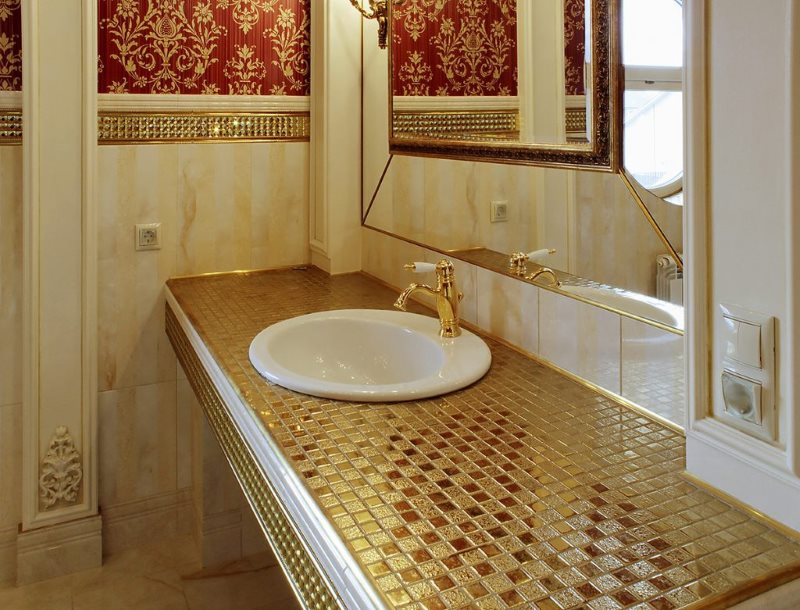
Mosaic can radically change the interior of the bathroom, giving it a more attractive and rich look.
The competent combination of mosaics and ordinary tiles in the bathroom, allow you to give the room a presentable and aesthetic appearance. A lot of people who make repairs themselves also choose this particular way of decorating bathrooms. Below we will analyze the main nuances that everyone who needs to choose a mosaic as a material for decoration in the bathroom needs to know.
Interior features of mosaic bathrooms
Content
- Interior features of mosaic bathrooms
- What to look for when choosing a mosaic
- How to design a bathroom using mosaics: the choice of color and decor
- Shape and size of items
- Decorative mosaic elements in the bathroom
- Types of mosaics and their main characteristics
- The benefits of combining mosaics with tiles
- Video: mosaic in the interior of the bathroom
- Mosaic in the bathroom: 50 photos
In itself, the ceramic mosaic has no special differences from the classic tile, except for the size. However, the design created using small mosaic elements is much more impressive. This is due to the fact that many small details connected by a single concept create a sense of handmade interior. Also important is the ability to trim the rounded elements with mosaics. Such decors look especially elegant and spectacular.
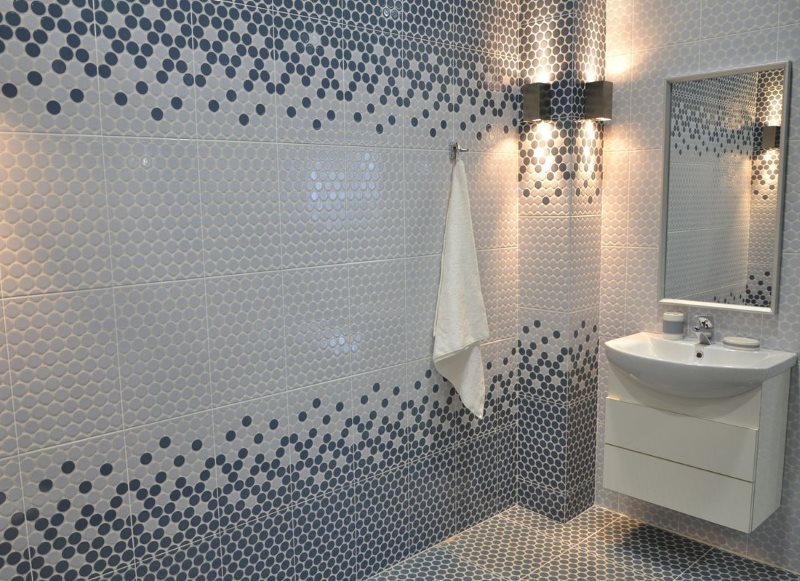
Mosaic tiles are equally well suited for small bathrooms in Khrushchev, as well as for spacious bathrooms in country houses

A certain flexibility of the material allows the mosaic to be faced with rather complex shapes, for example, countertops for sinks

Or even the sinks themselves, if the stylistic direction of the interior requires it
Mosaic laying services, like the material itself, are much more expensive than ordinary tiles. Such decoration looks more respectable and is an indicator of the high level of affluence of the owners of the premises.
Mosaic in the interior of the bathroom should be combined in color and style with the rest of the decor. Do not trim her absolutely all surfaces. The combined use of mosaics and other materials will look more stylish.
What to look for when choosing a mosaic
Depending on which surface you plan to clad, you need to choose the type and texture of the mosaic. Of course, the most common material for making mosaic tiles is ceramic. However, there are other options that are increasingly gaining popularity in the decoration of bathrooms. Below we will consider in detail all types and their characteristics, but at the stage of selecting mosaics for flooring, do not choose slippery material. This is a very important point, compliance with which will protect you and your loved ones.
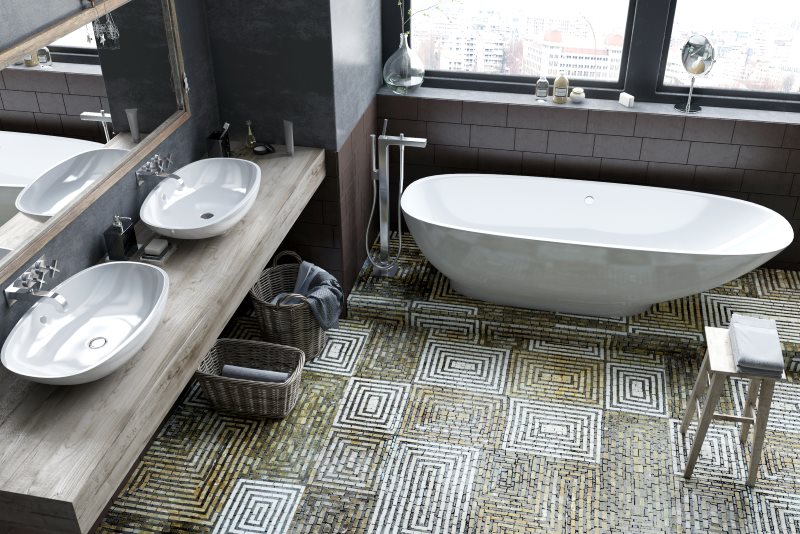
Ceramic or stone mosaic is best suited as flooring.
When choosing the size of the mosaic elements, consider whether there will be curved lines in the interior, because if you buy too large tiles, then facing the rounded surfaces will not work.
If you have even mosaic surfaces in your room’s design, you can purchase a large tile with mosaic details pre-glued to it.Thus, you can significantly save on the purchase of materials and work.
How to design a bathroom using mosaics: the choice of color and decor
As with classic finishes, mosaics in the bathroom also require you to consider color matching rules. The most popular option is when there is one background color in the design, and the additional two colors perform the function of arranging the necessary accents.
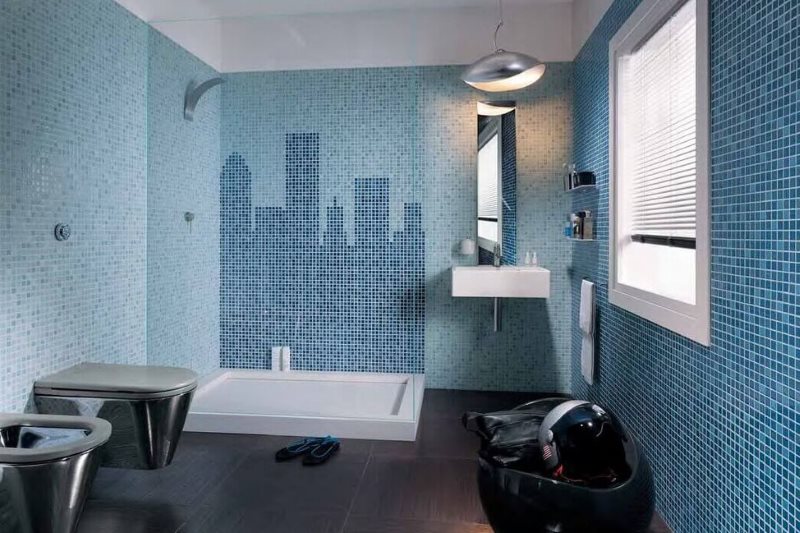
Simple mosaic pattern made from tiles of different colors
The most win-win option is to use a white mosaic as a background. Firstly, light colors are classics for decorating bathrooms, and secondly, against a light background, bright and contrasting accent tiles look much more spectacular.
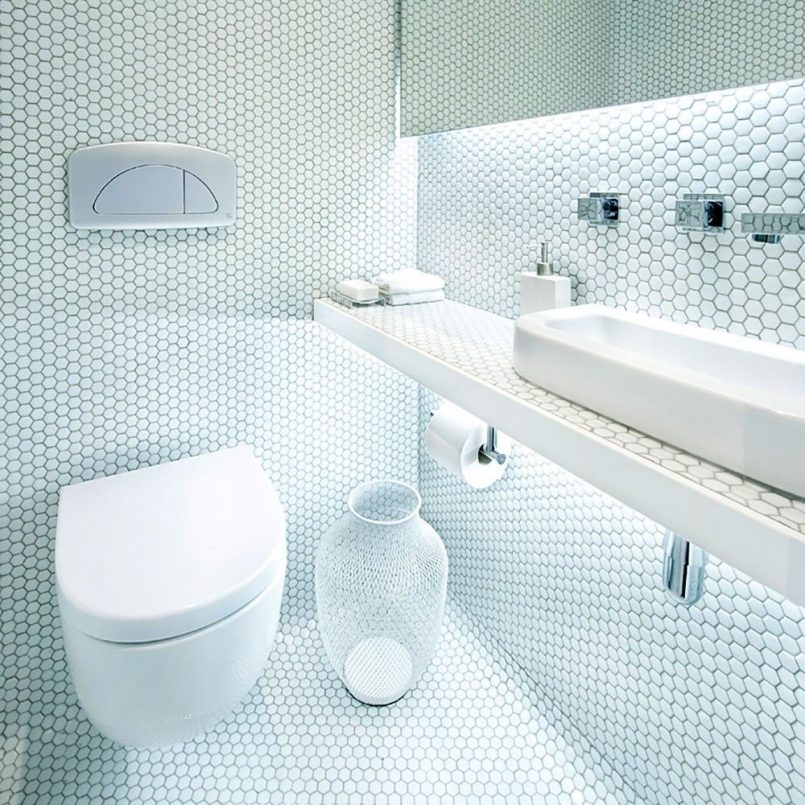
Solid white mosaic in the shape of honeycombs - a suitable solution for a small bathroom in a modern style
In any case, it is desirable to use pastel shades as a background, in combination with which it is much easier to highlight additional colors. For example, a red mosaic on a white background will look very impressive.
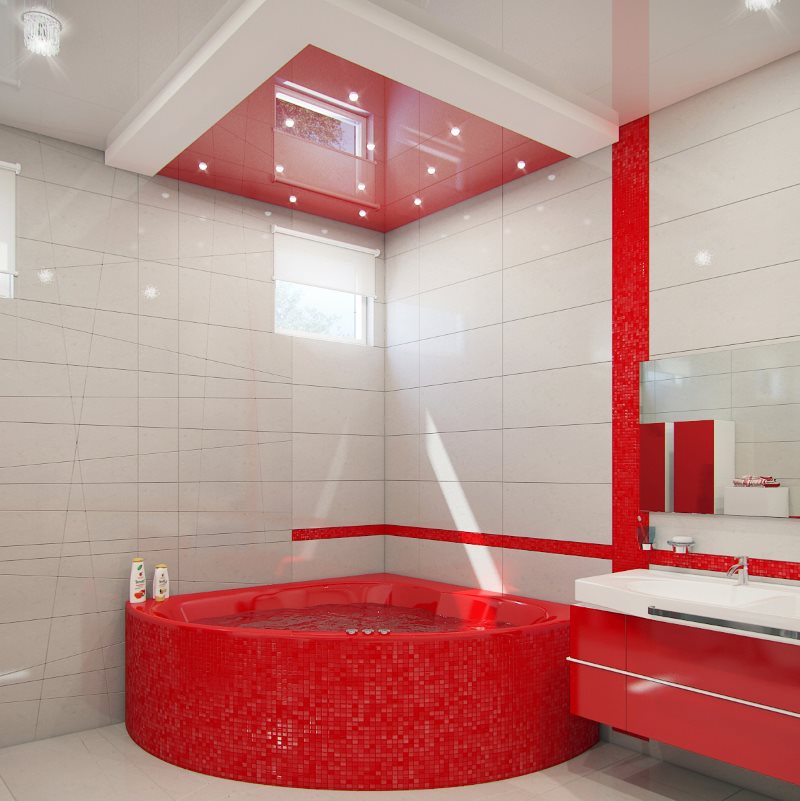
Contrast combinations are usually used to highlight individual objects or to zoning a bathroom
You should carefully choose the color scheme of the room. If you want to understand what the future mosaic bathtub will look like - photos of finished interiors are a must-have!
Shape and size of items
The classification of mosaics occurs in many ways, such as the material of manufacture, the size of the elements, and their shape. The most common forms of mosaic tiles:
- equilateral squares;
- rectangular;
- rhomboid;
- multifaceted;
- round.
A square mosaic can be considered a classic form, however, depending on the style of the room, the use of tiles of a non-standard shape can give the interior a unique charm.

It is easiest to create compositions from square details, therefore such a mosaic is the most “running”
Recently, the use of irregularly shaped mosaics is very common, this solution is especially popular if you want to create a unique handmade design. The downside is the high price of such work, because the competent layout of different sized parts can only be done by high-class professionals, and their services are expensive.
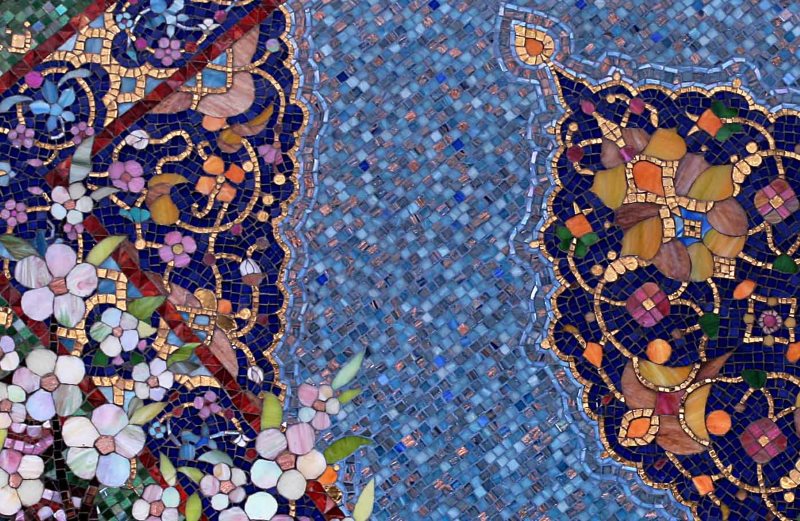
To create a bright and original composition, you need a multifaceted mosaic, consisting of pieces of tiles of different sizes and shapes
Mosaic tiles are available in the range from 1x1 to 5x5 cm. The standard size of the mosaic is two by two centimeters square. But, as in art, there are no patterns and restrictions, it all depends on your sense of style and imagination.
Decorative mosaic elements in the bathroom
Aerobatics when decorating rooms with mosaics is the decoration of surfaces and the creation of various patterns and drawings on them. Here, the border between decorating and art begins to get lost, they merge into a single whole, and the result is not just a bathroom, but a real masterpiece. Of course, the execution of such ideas requires a high level of skill of the tilers and a clearly articulated artistic concept or design project. Below we will consider the most interesting examples of decorative mosaic elements in the interior.

A stone mosaic with a textured surface was chosen to clad these shelves.
Mosaic panel
This is the creation of complex drawings and compositions from small mosaic tiles. When working on such images, small-sized elements are used, so they can be laid out on both a flat and curved surface.
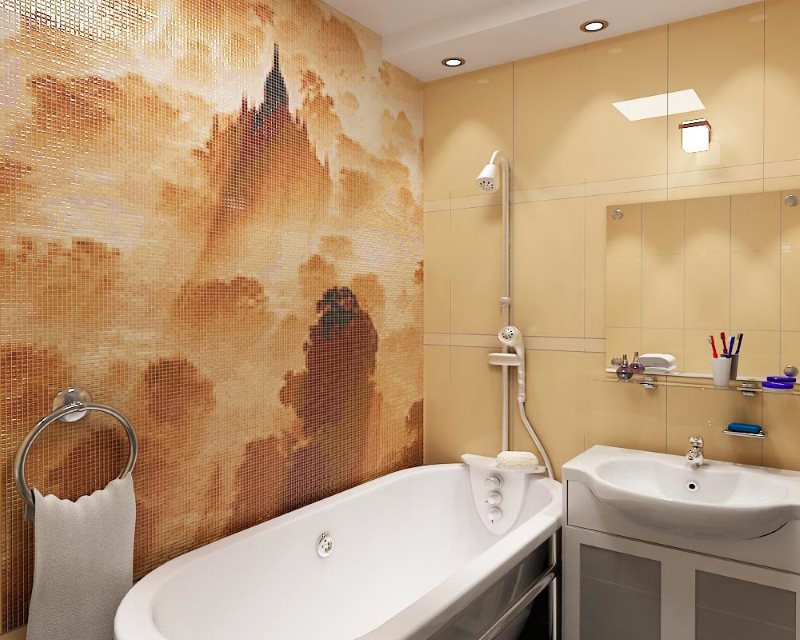
Ready-made mosaic compositions, sometimes even laid out on a grid, are available for sale. The subjects of such paintings are very diverse
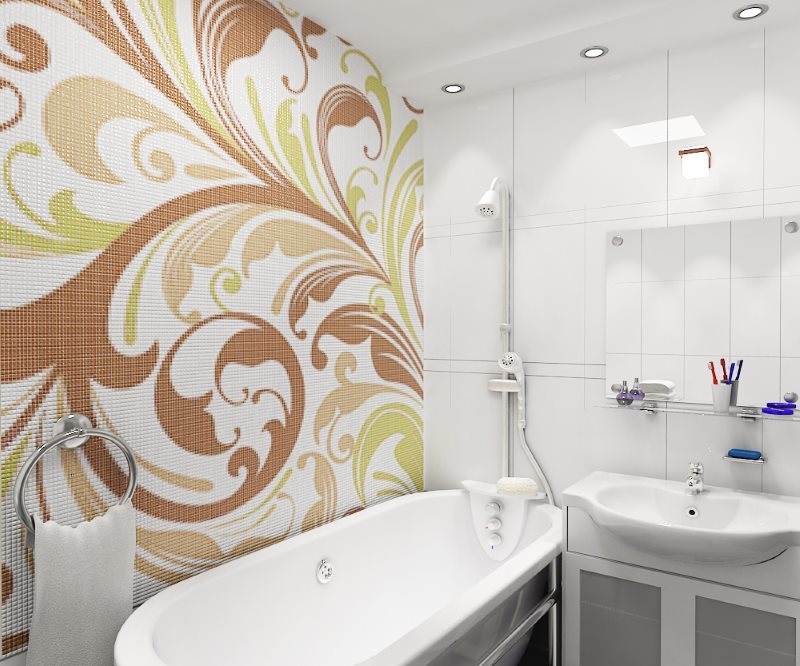
If desired, you can create a drawing yourself using pieces of mosaics of various colors.
A mosaic panel is an original way to emphasize the individuality of the owner of the room. Such a solution for decorating the bathroom will be a confirmation of the high social status of the owner. Mosaic panels can turn a simple trip into the shower into a real aesthetic and emotional pleasure for the residents of the house.
Drawings, ornaments, accents
A somewhat simpler, but no less effective way to lay out a mosaic is a technique using patterns, ornaments and combinations of tiles of various colors. There are several types of such design:
- monochrome;
- background;
- gradient;
- mix
The one-color method is the use of the same color, shape and size when facing mosaics. As a rule, this technique is used to create an interior in the style of minimalism. If you add a bright element of contrasting color to the composition, then such an emphasis will be characteristic already for the Art Nouveau style.
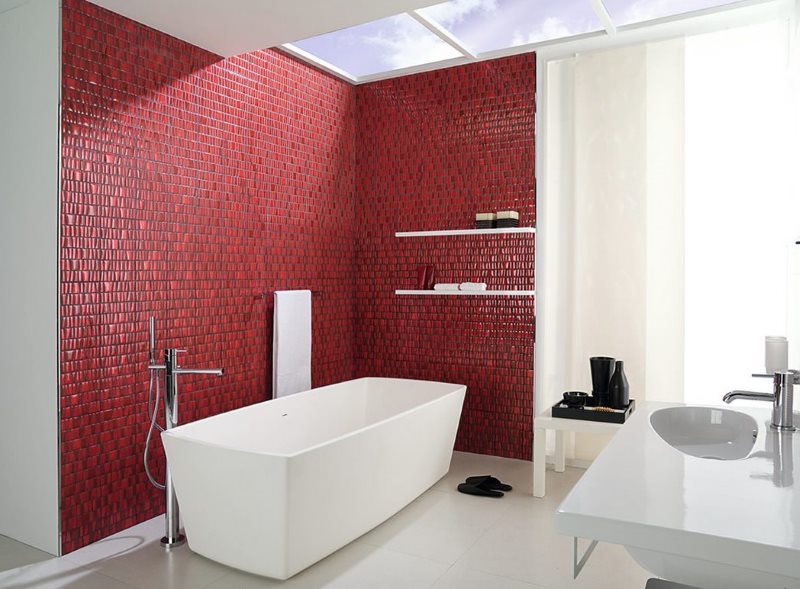
The wall, lined with monophonic mosaic of dark color, serves as an excellent backdrop for white objects
Background - this method is performed using mosaics of different (sometimes the same) sizes. The main condition for creating the background is the lack of a clear pattern when laying out the tiles. This creates a textured surface that looks spectacular even without accents and patterns. This cladding method can be either single-color or using several colors.
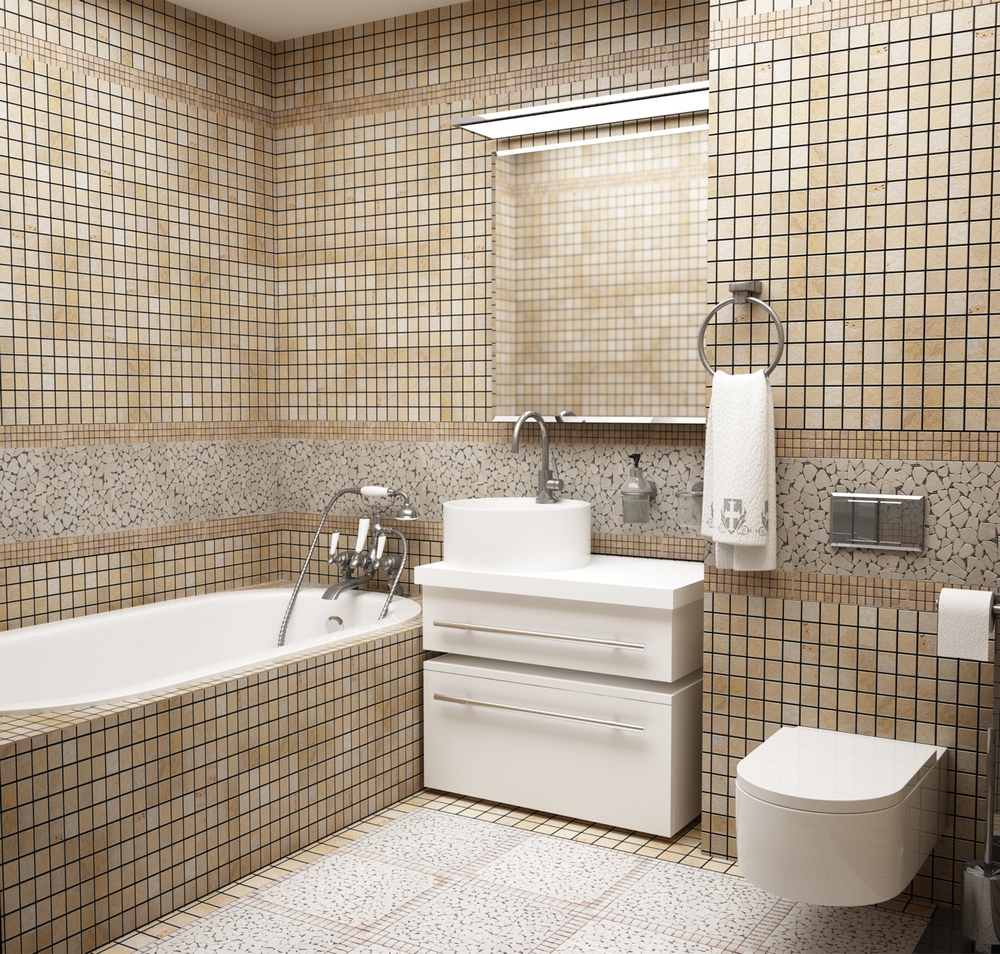
When facing these walls, mosaic tiles of two sizes and three shades were used.
Gradient - the option of installing mosaic tiles, in which the color, during masonry, smoothly transitions from one to another. As a rule, it is used if necessary to visually expand the room.
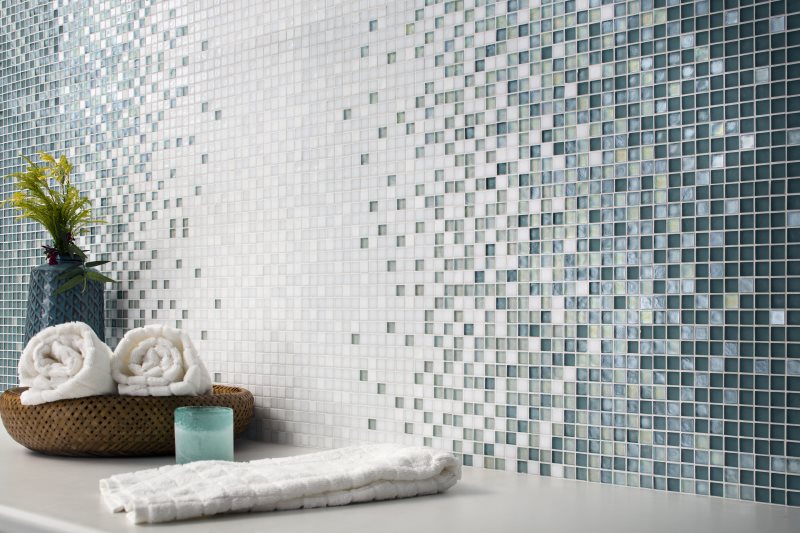
The wall looks beautiful, on which one shade smoothly passes into another
Mix - a combination in one composition of a mosaic of different shades, laid out either in an arbitrary order, or with the formation of patterns. This method uses tiles of the same size.

The simplest mix is geometric patterns laid out from tiles of the same size but different colors
These techniques are purely advisory in nature and do not seek to limit or regulate methods of working with mosaic tiles. You can easily, according to your taste, mix these styles, or create a unique way of laying mosaics.
Types of mosaics and their main characteristics
The most common mosaic material is ceramics. However, there are still many varieties of mosaic tiles, which are becoming increasingly popular. Below we will consider their main types and analyze the technical features of each of them.
- Ceramic mosaic. Classic mosaic tiles in high demand. It is quite versatile, durable, resistant to temperature and humidity, and also has a not too high cost. Technical characteristics of ceramic mosaics are similar to conventional full-size tiles. The advantages of this type include a wide selection of various textures that can mimic even natural materials such as stone and wood.
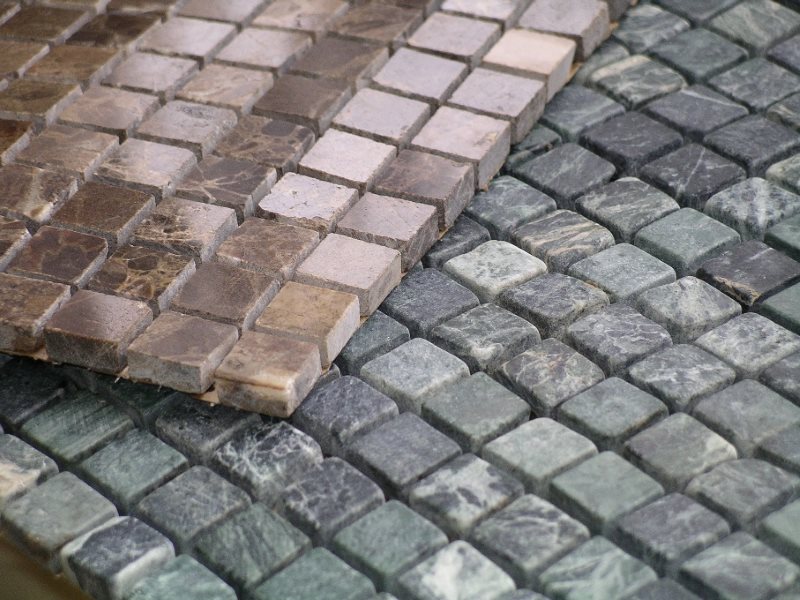
Ceramic mosaic is appreciated for the ability to create beautiful art decor at relatively low cost.
- Glass mosaic. A slightly cheaper option compared to ceramics. Visually can give a more voluminous picture. It is mainly used for wall cladding.
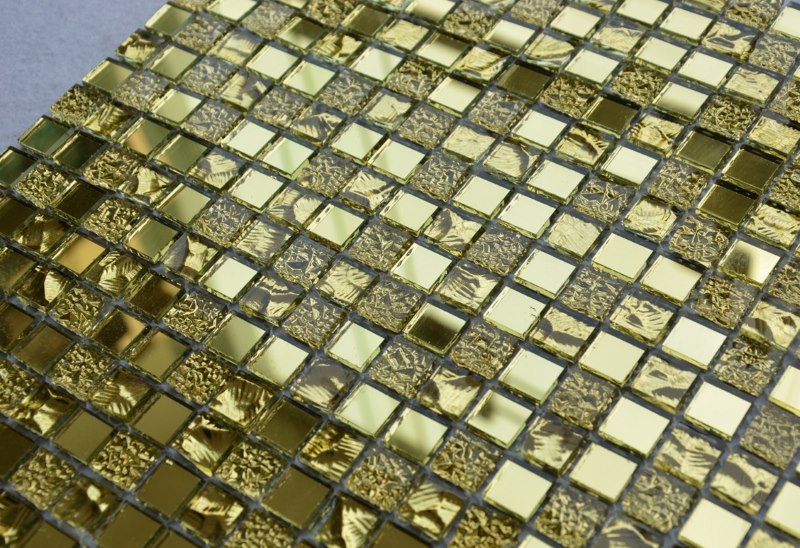
Glass mosaic can be with various effects, for example, in gold
- Smalt mosaic. Compared with ceramics, it has higher strength characteristics. The coating is very resistant to abrasion. It is used in rooms with high passability.
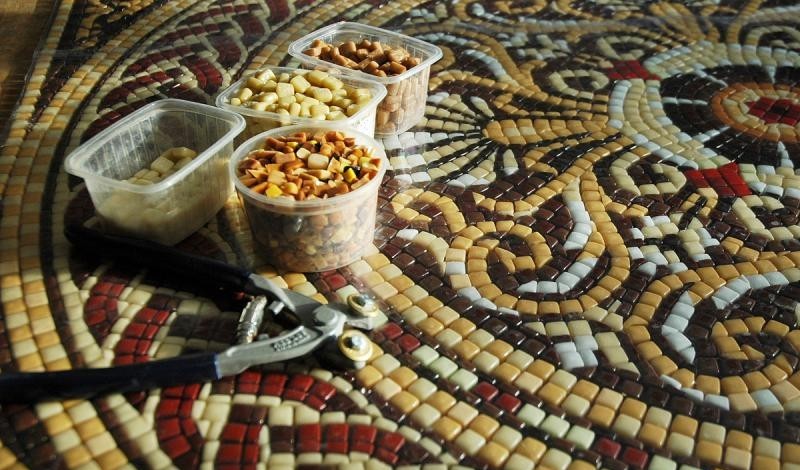
The richest range of smalt mosaic colors allows you to create real masterpieces from it
- Stone mosaic. Natural stone as a surface cladding is able to create a unique interior indoors.Depending on the type of stone chosen, performance may vary, as well as cost. The most popular stone rocks are marble, granite, slate, jasper.

Stone mosaic can be smooth or rough, square or in the form of fragments. And you simply can’t list the possible combinations of colors and shades.
- Plastic. The most budget option is to imitate mosaics using plastic panels. Of course, this option is much less resistant to mechanical damage and looks less impressive, but the price is several times lower than the original mosaic.
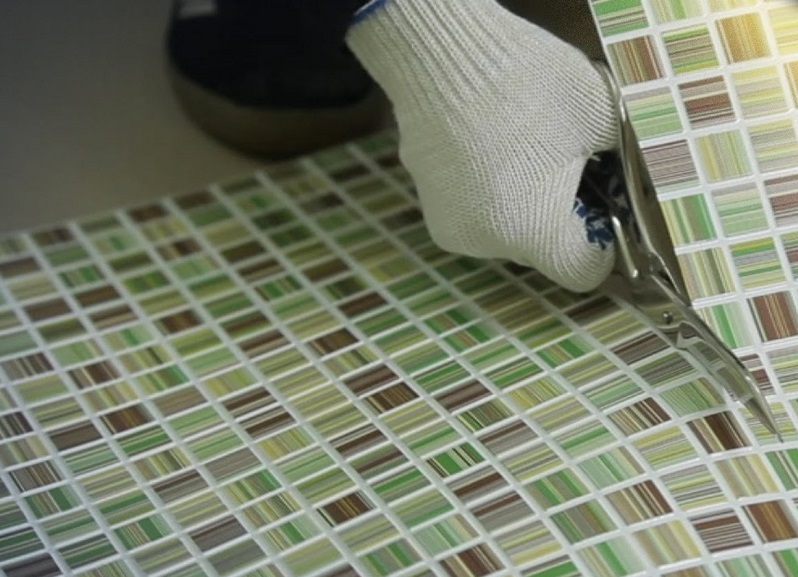
Sheets of plastic mosaic can be bent, sawed, cut geometric shapes, it is easy to make holes in it
The benefits of combining mosaics with tiles
A sense of proportion is important in everything, and if it is absent, then even the most expensive finishing material will look vulgar and inappropriate. It is very easy to overdo it with mosaic in the interior. To help create a concise design using mosaic tiles will help its combination with the usual, full-sized tile. Correctly selected color combinations will help to correctly place accents and highlight in the room exactly those places that need to be identified.
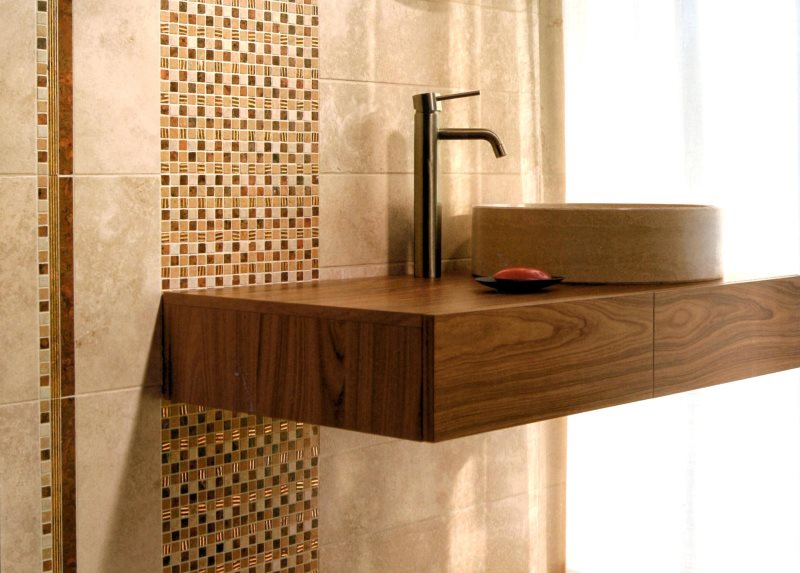
When choosing a mosaic for a tile, it is important to consider its size and shape
If you want to understand how a bathroom with mosaics and tiles should look like - photos from already created interiors are required to study!

Creating contrasting compositions involves the use of bright mosaics that stand out against the background of plain tiles

Even small interspersed mosaics cool change the interior of the bathroom for the better
If you are planning a repair in the bathroom, then the modern way of facing surfaces using mosaics is a great option for creating a unique interior. We hope that our article will help you decide on the choice and style of the future bathroom.
Video: mosaic in the interior of the bathroom
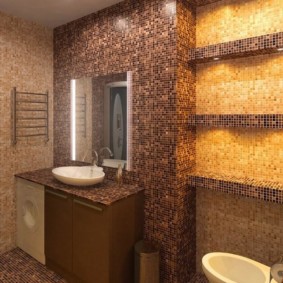
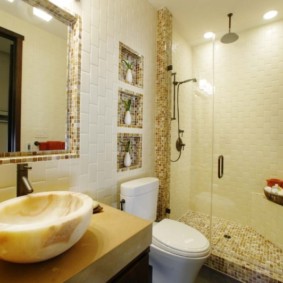
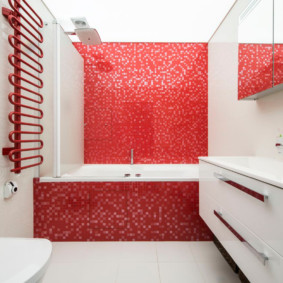
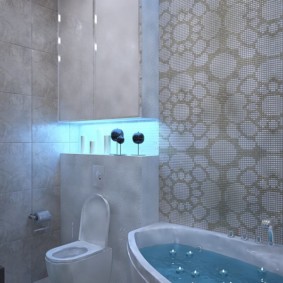
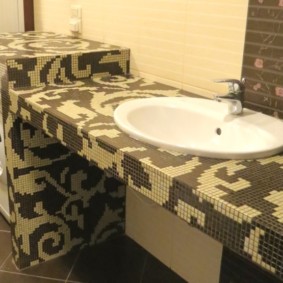
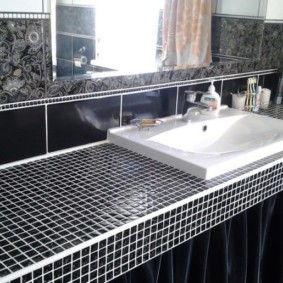

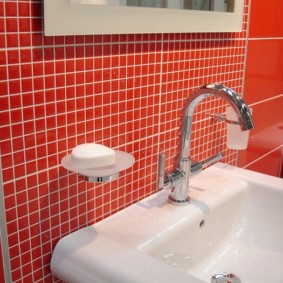
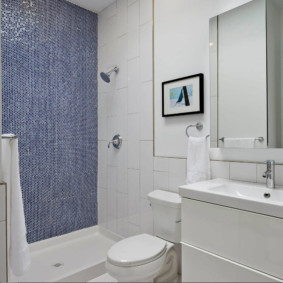
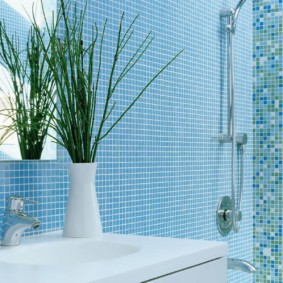
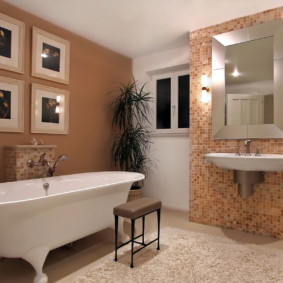
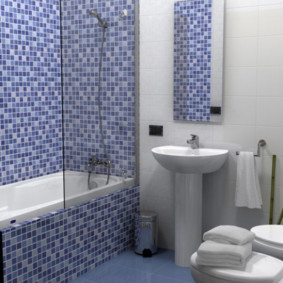
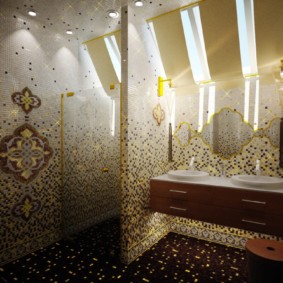
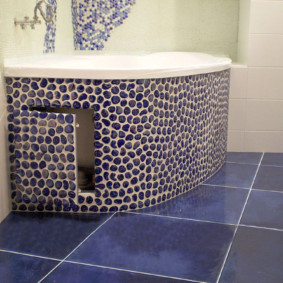
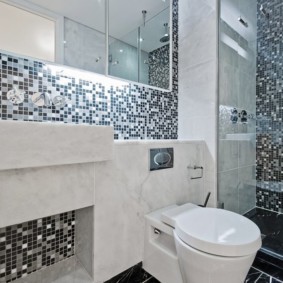

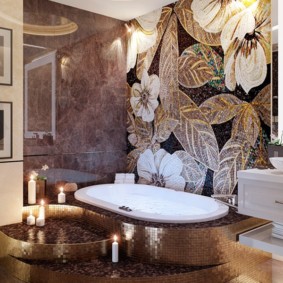
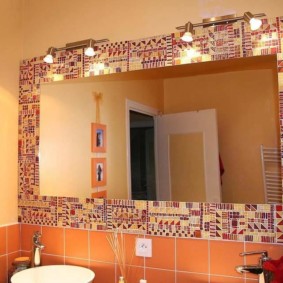
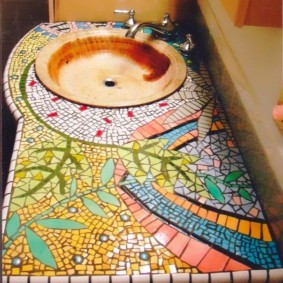
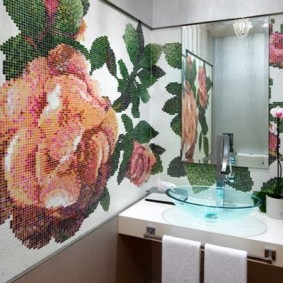
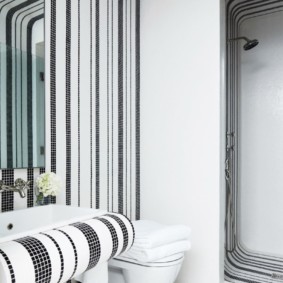
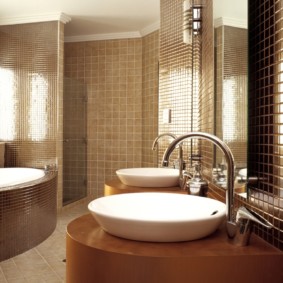



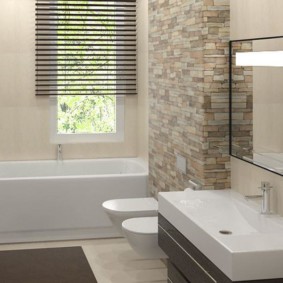
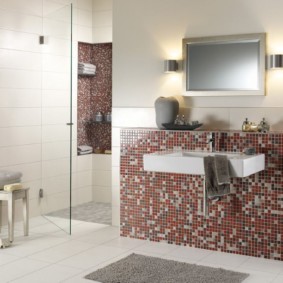
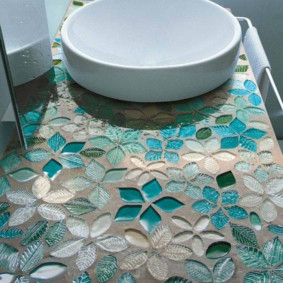
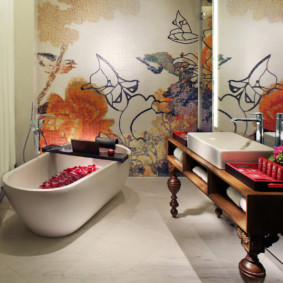


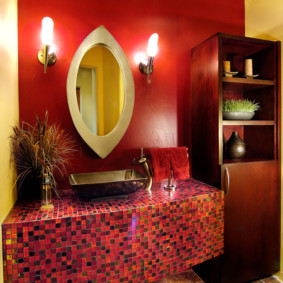
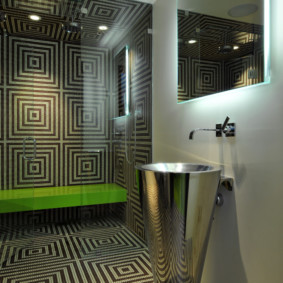
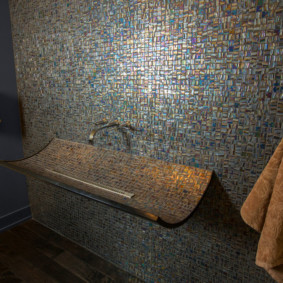
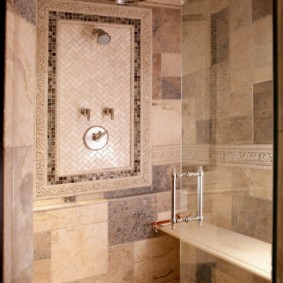
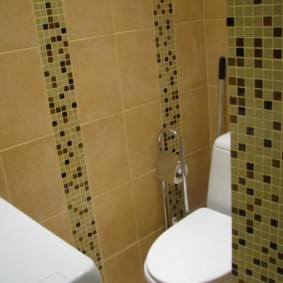
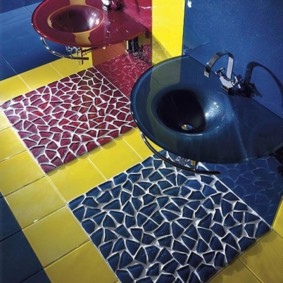
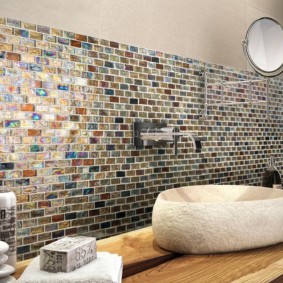
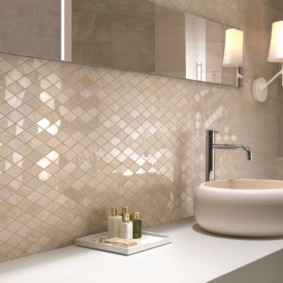
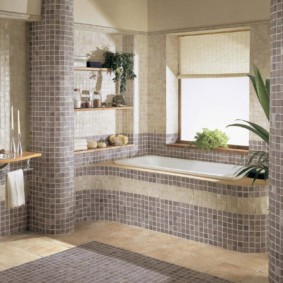

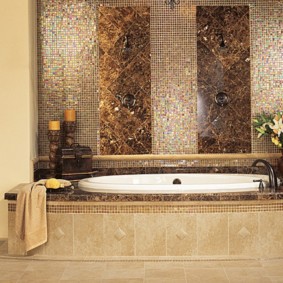


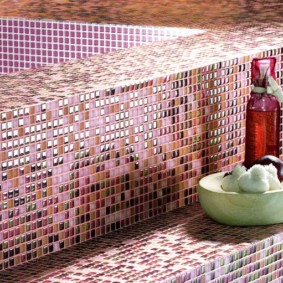
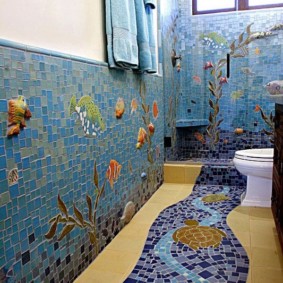
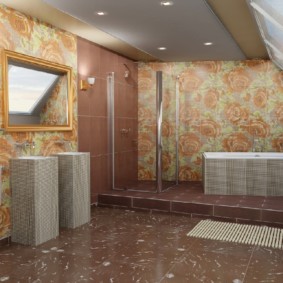
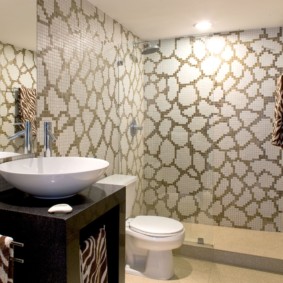
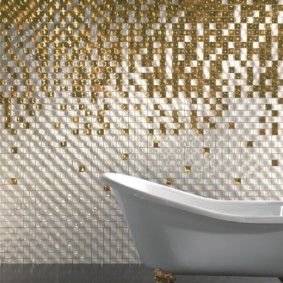


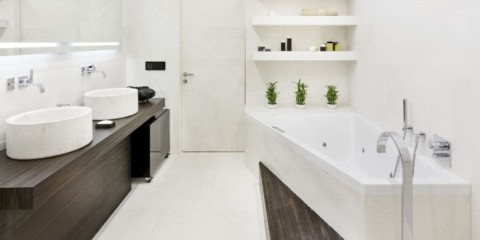
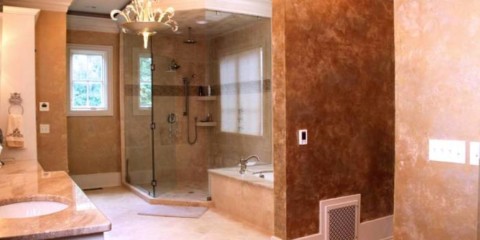
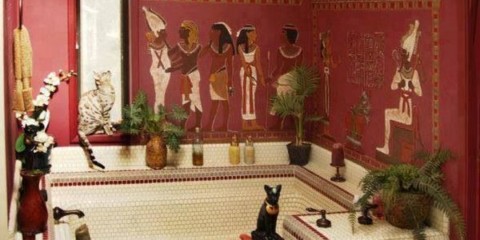
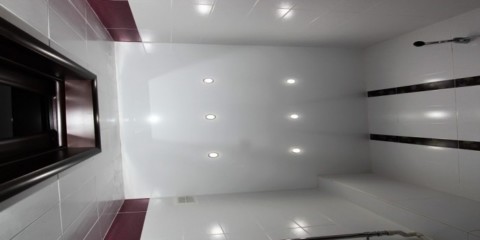
Good afternoon, is it possible to purchase smalt of different colors from you in separate sheets? The cost of 1 sheet? Thank you